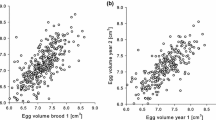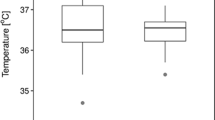Abstract.
Parental investment (PI) theory predicts that parents should invest more in large than small broods and high- than low- quality offspring. These predictions were tested in relation to nest defence behaviour of great tits, Parus major, in northern Finland. We manipulated future benefits as a function of investment in current offspring using food supplementation, which resulted in manipulated broods having a greater number of larger-sized fledglings than control broods. Supplemented parents engaged in riskier nest defence behaviour than did non-supplemented parents. The result was independent of parental condition, suggesting that the expected costs of provisioning did not contribute to the result. Thus, great tit parents appear able to adjust their nest defence behaviour to the expected fitness value of their offspring, as predicted by the PI theory. On the other hand, the large manipulation effect on brood value was possible only because the breeding success of northern great tits is exceptionally low (50–60% of eggs produce fledglings, cf. 90% in mid-latitudes). This is due to food limitation during the nestling period, suggesting that great tit clutch adjustment strategies are not adapted to the harsh northern environment.
Similar content being viewed by others
Author information
Authors and Affiliations
Additional information
Electronic Publication
Rights and permissions
About this article
Cite this article
Rytkönen, S. Nest defence in great tits Parus major: support for parental investment theory. Behav Ecol Sociobiol 52, 379–384 (2002). https://doi.org/10.1007/s00265-002-0530-y
Received:
Revised:
Accepted:
Issue Date:
DOI: https://doi.org/10.1007/s00265-002-0530-y




